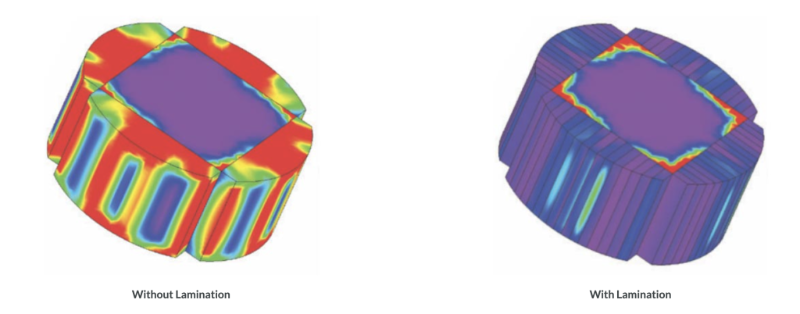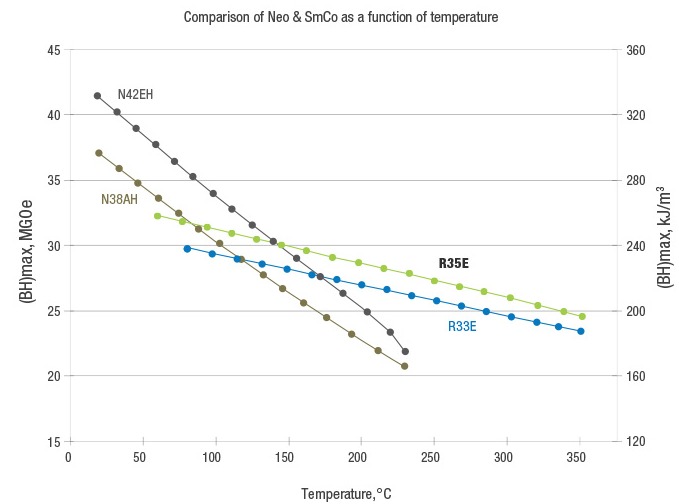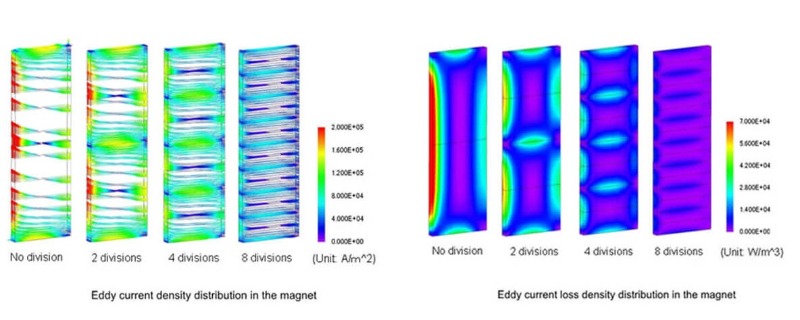Introduction of Laminated Magnet
Laminated magnets, also known as segmented magnets, consist of two or more individual magnets that are bonded and insulated to each other. They were developed to enhance the performance of electric machines by preventing the magnets from overheating. Laminated NdFeB magnets are commonly used for this purpose, but SmCo 2:17 also serves as a fundamental magnetic material for magnet segmentation technology.
KINGS MAGNET minimizes the tradeoff by offering best-in-class materials with:
1.The thinnest available insulating layers, <20 um
2.Performance at temperatures up to 200˚C
3.Magnet layers from .5 mm and up in custom shapes and sizes in SmCo Magnet and NdFeB Magnet

Application of laminated magnets:
Laminated magnets are often used in electric motors, generators, transformers, and other electromagnetic devices where controlling energy losses is essential.

Characteristics of Laminated magnets:
- Reduced Eddy Current Losses: One of the primary purposes of laminating magnets is to reduce eddy current losses. Eddy currents are circulating currents induced in a magnetic material when it is exposed to a changing magnetic field. By laminating the material, the circulating currents are restricted to smaller loops within each layer, reducing energy losses.
- Improved Efficiency: Laminated magnets are commonly used in motors and generators where efficiency is critical. By minimizing eddy current losses, these magnets can contribute to the overall efficiency of the device.
- Enhanced Magnetic Performance: Laminated magnets can help control the direction of magnetic flux and reduce losses associated with hysteresis and eddy currents, leading to improved magnetic performance.
- Construction: The laminations in a laminated magnet are typically very thin, often on the order of millimeters or less. The thickness and composition of the laminations depend on the specific requirements of the application.


How Magnet Segmentation Conquers Demagnetization?
Magnet segmentation, or dividing a magnet into distinct segments or pieces, is a strategy employed to address demagnetization and enhance the overall performance and stability of magnetic systems. Here's how magnet segmentation conquers demagnetization:
- Controlled Magnetic Flux Paths:Magnet segmentation allows for the creation of controlled magnetic flux paths within the magnet.By segmenting the magnet into smaller pieces, the magnetic flux is confined to specific regions, reducing the risk of demagnetization.
- Reduced Eddy Currents:Eddy currents, induced in magnetic materials when exposed to changing magnetic fields, can contribute to demagnetization.Magnet segmentation helps reduce eddy current losses by limiting the continuous paths for circulating currents within the magnet.
- Localized Magnetic Poles:In segmented magnets, each segment can act as an individual magnetic pole.This segmentation can enhance the stability of the magnetic field by isolating the effects of demagnetization to specific segments rather than affecting the entire magnet.
- Enhanced Magnetic Field Control:Magnet segmentation provides finer control over the magnetic field distribution.This control allows for the optimization of magnetic strength in specific regions while minimizing the risk of demagnetization.
- Resistance to Mechanical Stress:Segmentation can improve the mechanical integrity of a magnet.In applications where magnets may experience mechanical stress, segmentation can help prevent cracking or fracturing that could lead to demagnetization.
- Variability in Magnetic Properties:Different segments of a magnet can be tailored to have varying magnetic properties, such as different coercivities.This allows for customization to suit specific application requirements and mitigate the impact of demagnetization under varying conditions.
- Magnetic Assemblies:Segmented magnets are often used as components in larger magnetic assemblies.In these assemblies, segmentation can be part of an overall strategy to optimize magnetic performance and minimize demagnetization risks.
- Material Choices:The choice of magnetic materials for each segment can be optimized based on the specific requirements of different regions within the magnet.This allows for a more tailored approach to balancing magnetic properties and demagnetization resistance.
- Advancements in Design:Ongoing research and advancements in magnet design continue to refine the segmentation approach, exploring new materials and configurations for improved performance.
In summary, magnet segmentation is a technique that provides a level of control over the magnetic field, minimizing the impact of demagnetization and enhancing the stability and reliability of magnetic systems, particularly in applications where demagnetization is a critical concern.
Essential Manufacturing Process of Laminated Magnets
First, NdFeB blanks are sliced into equal-thickness single pieces and then laminated with insulation glue. The fully laminated blank is then cut, sliced, and ground to the desired geometry and size, creating a complete laminated NdFeB magnet. The bonding adhesive typically achieves a maximum insulation rate of 95%. However, due to the adhesive, electroplating is not possible, as the magnet body is no longer electrically conductive. As an alternative, common coating solutions include epoxy-painting (usually black) or phosphorization.
Custom magnet steps:

The above are the general steps for customizing magnets. If you have special requirements, please send an email with special instructions.





